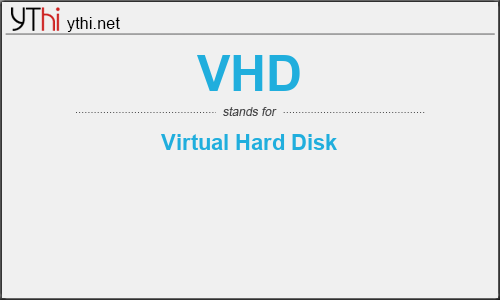What does VHD mean? What is the full form of VHD?
The Full Form of VHD is Virtual Hard Disk.
VHD (Virtual Hard Disk) and its successor VHDx are file formats representing a virtual hard disk drive (HDD). They may contain what is found on a physical HDD, such as disk partitions and a file system, which in turn can contain files and folders. They are typically used as the hard disk of a virtual machine, are built into modern versions of Windows, and are the native file format for Microsofts hypervisor (virtual machine system), Hyper-V.
The format was created by Connectix for their Virtual PC product, known as Microsoft Virtual PC since Microsoft acquired Connectix in 2003. VHDx was introduced subsequently to add features and flexibility missing in VHD that had become apparent over time.
Since June 2005, Microsoft has made the VHD and VHDx Image Format Specifications available to third parties under the Microsoft Open Specification Promise.
On Windows 10, a virtual hard disk (VHDX or VHD) is a file that can use a “.vhdx” or “.vhd” extension and acts like a physical hard drive, but with the difference that this is a file stored on a real disk.
Using either format (.vhdx or .vhd) for a virtual drive, you can store any files, including documents, pictures, videos, boot files, and an entire OS installation. The only differences between the two formats are that a .vhdx file supports a maximum size of 64TB, features resiliency against power failure, and provides better performance.
Typically, a VHD comes in handy to add extra storage to a Hyper-V virtual machine, and thanks to its ability to support other OS installations, you can even use this storage virtualization technology to create a dual-boot system without modifying an existing partition.
VHD
means
Virtual Hard Disk![]()
Translate Virtual Hard Disk to other language.


Leave a Reply
You must be logged in to post a comment.